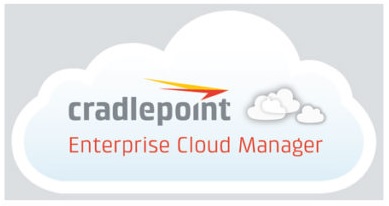ECM Enables Simplified Management & Stronger Security

Enterprise Cloud Manager (ECM), Cradlepoint’s cloud-based network management platform, is different than any other tool on the market.
Many IT professionals now know that by enabling zero-touch deployment, remote management and troubleshooting, and proactive alerting and reporting, ECM helps IT teams achieve better reliability and reduce the overall cost of managing the network. However, we receive a lot of questions from current and potential customers about how ECM works and what’s possible through the platform.
Here are answers to a few of the most frequently asked questions about ECM:
FAQs: How Enterprise Cloud Manager Works
How is Enterprise Cloud Manager able to stay securely and consistently connected to routers on a cellular network?
Here’s a great overview of how ECM connects and communicates with Cradlepoint routers:
How does Enterprise Cloud Manager work within the context of a private network (cellular or wired)?
We receive this question frequently because ECM is located on the public Internet. Depending on a network’s security settings, sometimes routers on a private network have trouble communicating with cloud applications, typically because of firewall restrictions.
Enterprise Cloud Manager can work in the context of a private network. To make it work, one of the router’s outbound firewall ports must be opened. Security professionals, rest assured: no inbound ports need to be opened, thanks to our proprietary Cradlepoint Stream Protocol.
How much data does Enterprise Cloud Manager consume?
The average cellular data usage is approximately 5-10 MB per router per month. This reflects what we expect to see in “typical” scenarios, in which routers have mostly default settings. In contrast, other solutions that aren’t built for managing wireless networks and cellular data can use upwards of 100 MB to even 2GB per router per month. Again, this ability to minimize data usage is thanks to our Stream Protocol.
What are the biggest differences between ECM and other network management platforms?
Purpose-Built for Cellular & Wired Networks — ECM was engineered specifically to manage devices with cellular networks and infrastructure. In addition to utilizing less data to manage devices, ECM is prepared to handle frequent network drops and latency issues that at times are part and parcel of utilizing cellular connectivity (though cellular carrier networks are becoming more reliable all the time). ECM and Cradlepoint routers also are made for dynamic IP address networks that don’t rely on static IP addresses. That’s a must-have capability if you plan to utilize cellular connectivity.
Multi-WAN Capability — Many of our customers interface with multiple WAN sources. It’s not uncommon for an organization to combine a wired ISP and dual-modem cellular connectivity for carrier redundancy and WiFi as WAN. Enterprise Cloud Manager gives those organizations the ability to manage all of those WAN sources together on a single platform.
Data Usage Analytics — Again, because ECM was engineered with cellular applications in mind, the platform allows network administrators to monitor cellular network data usage, set up alerts when data usage for a certain location or router reaches a specific threshold, and optimize usage to reduce costs.
Auto Carrier Selection: For certain applications, an enterprise needs carrier redundancy but also needs to maximize cost-effectiveness. In those situations, it makes sense to utilize Auto Carrier Selection.
FAQs: Security
How are Enterprise Cloud Manager servers secured?
ECM is hosted at world-class, third-party cloud hosting facilities providing data, hardware, and power redundancy, high availability, security, scalability, and backup services. Enterprise Cloud Manager is continuously maintained and undergoes regular vulnerability assessments and remediation.
How does Enterprise Cloud Manager enable network security?
Granular Alerting & Reporting — The network’s Edge is a vulnerable place, and it’s critical to understand exactly what’s gone wrong when you’re troubleshooting remotely. Cradlepoint’s easy-to-read visuals, proactive alerts, and flexible alerting templates make it possible to create alerting and reporting structures that meet your organization’s unique needs.
Parallel Networking — We believe strongly in the power of Parallel Networking for reducing network complexity and keeping sensitive data safe. Many network administrators and IT managers use Parallel Networks to create application-specific, physically separate networks to protect cardholder data while enabling customer engagement and improving operations. ECM makes it easy to manage multiple Parallel (or air-gapped) Networks.
Group Configuration — Staying on top of configurations, firmware, and security patches is a fundamental security best practice, but it’s easier said than done. Rolling out firmware router by router is an incredibly time-consuming task for distributed enterprises — one that can take hundreds of hours, especially in distributed enterprises. With ECM, it’s easy to group routers to roll out firmware and configuration updates to entire router groups in minutes.
FAQs: Cool Features
Do you have an API for ECM?
Yes. You can access further details about the API on our KnowledgeBase or online Developer Community, but here are a couple of great use cases worth mentioning:
Troubleshooting Ticket Creation — Many of our customers use the ECM API to integrate ECM alerts with their troubleshooting ticketing systems. If specific alerts are logged on ECM, a service ticket is automatically created and put in the work queue.
Data Integration — Many of our customers use the ECM API to merge the data logged by ECM with network data from other management and security applications, including many SIEMs and NMSs.
How does Cradlepoint’s Out-of-Band Management work?
ECM extends remote management capability to any device with a console serial interface, more commonly to access an offline or completely failed primary router via the cloud while Cradlepoint’s seamless 3G/4G LTE failover keeps the network running. Out-of-Band Management (OOBM) eliminates the problems associated with “flying blind” when your primary router goes down and allows complete management without complex setup, all while leveraging the existing cellular business continuity solution.
For More Information:
- For Cradlepoint Solutions Contact a USAT Representative
- To Shop for Cradlepoint Products, Click Here
Share this Post












